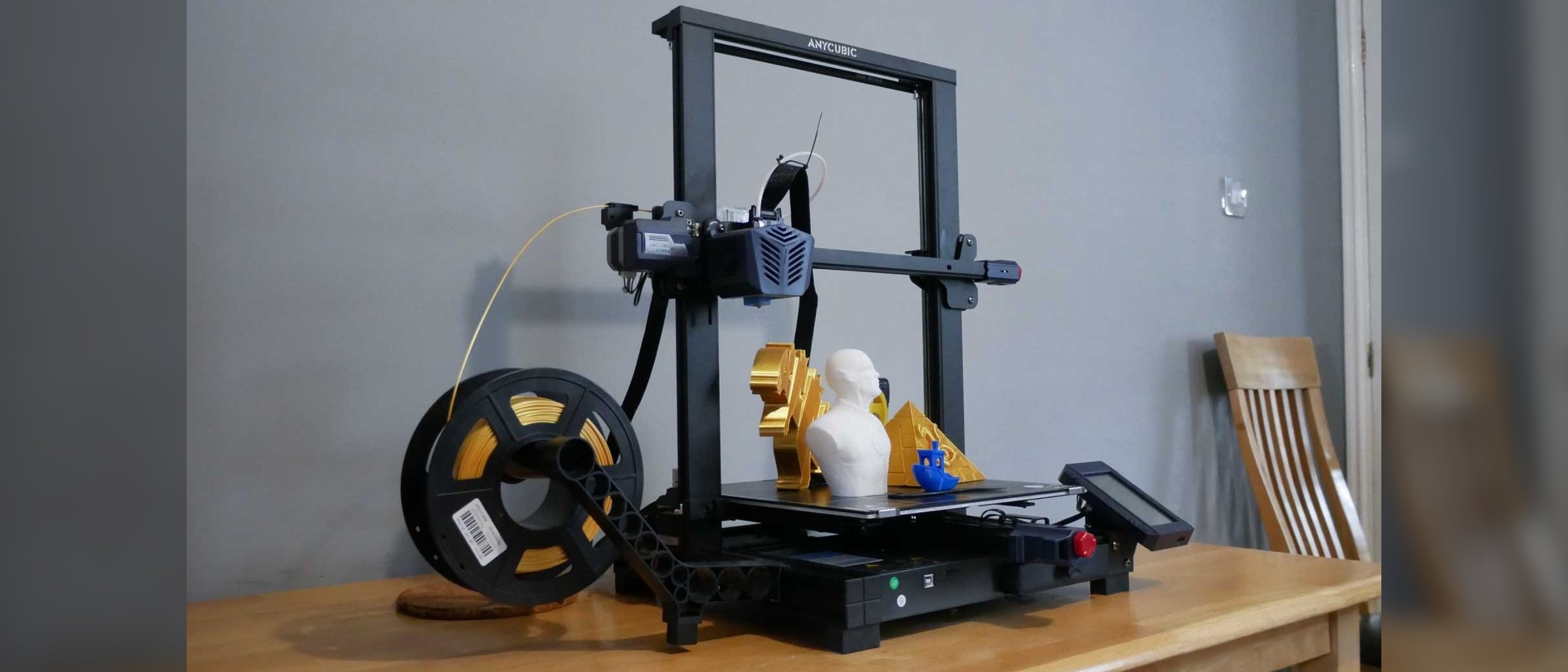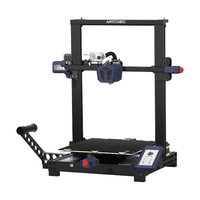Space Verdict
Out of all of the 3D printers on the market, the Anycubic Kobra Plus feels like the most suited for beginners. With auto-levelling and a great sized printing surface, it’s as accessible as any Anycubic product has ever been, but there are still a few annoying flaws.
Pros
- +
A large build plate
- +
Auto-levelling that works
- +
Great quality FDM print
Cons
- -
Can’t adjust offset by .1 mm
- -
Loud fans
- -
Same extruder block as the Vyper
- -
Glass bed doesn’t easily let go of prints
Why you can trust Space.com
The accessibility of 3D printing is only increasing as the years pass. While resin printers still have a danger factor that hinders wide appeal, FDM printers are quickly becoming a worldwide hobby, one that the Anycubic Kobra Plus seems eager to take advantage of.
The Anycubic Kobra Plus is one of the easiest to setup and use printers that we've come across to date, making it ideal for newbies who want to dip their toes into the world of FDM 3D printing.
However, Anycubic’s attempt to create a newbie-focused product isn't without its drawbacks. There are some issues that need addressing right away, one of which being an unnecessarily confusing naming scheme that serves only to alienate users new and old. The Kobra Plus is the middle child in the Kobra lineup, above the Kobra and behind the Kobra Max, though all of them share a distinct heritage with the companies previously released Vyper.
While some may be not be enthused by the Kobra Plus’ lack of impressive new features like multi-colour devices such as the Bambu Lab X1, this large 350 x 300 x 300 mm FDM printer is a perfect fit for either a newcomer’s first machine or a new addition to an already existing print farm. Paired with an upgraded auto-levelling system (called Anycubic LeviQ auto bed leveling), there's very little to deter any FDM users from the Kobra Plus.
With the past few years of 3D printer designs iterating instead of innovating, does the Anycubic Kobra Plus add anything new to the table? Or is it simply just another printer from one of the industry’s biggest brands?
Save $100 on the Anycubic Kobra Plus: Subscribe to the Anycubic newsletter to be notified when the Anycubic Kobra Plus launches – the first 2000 buyers will receive a $100 early bird discount.
Anycubic Kobra Plus review: Design & set Up
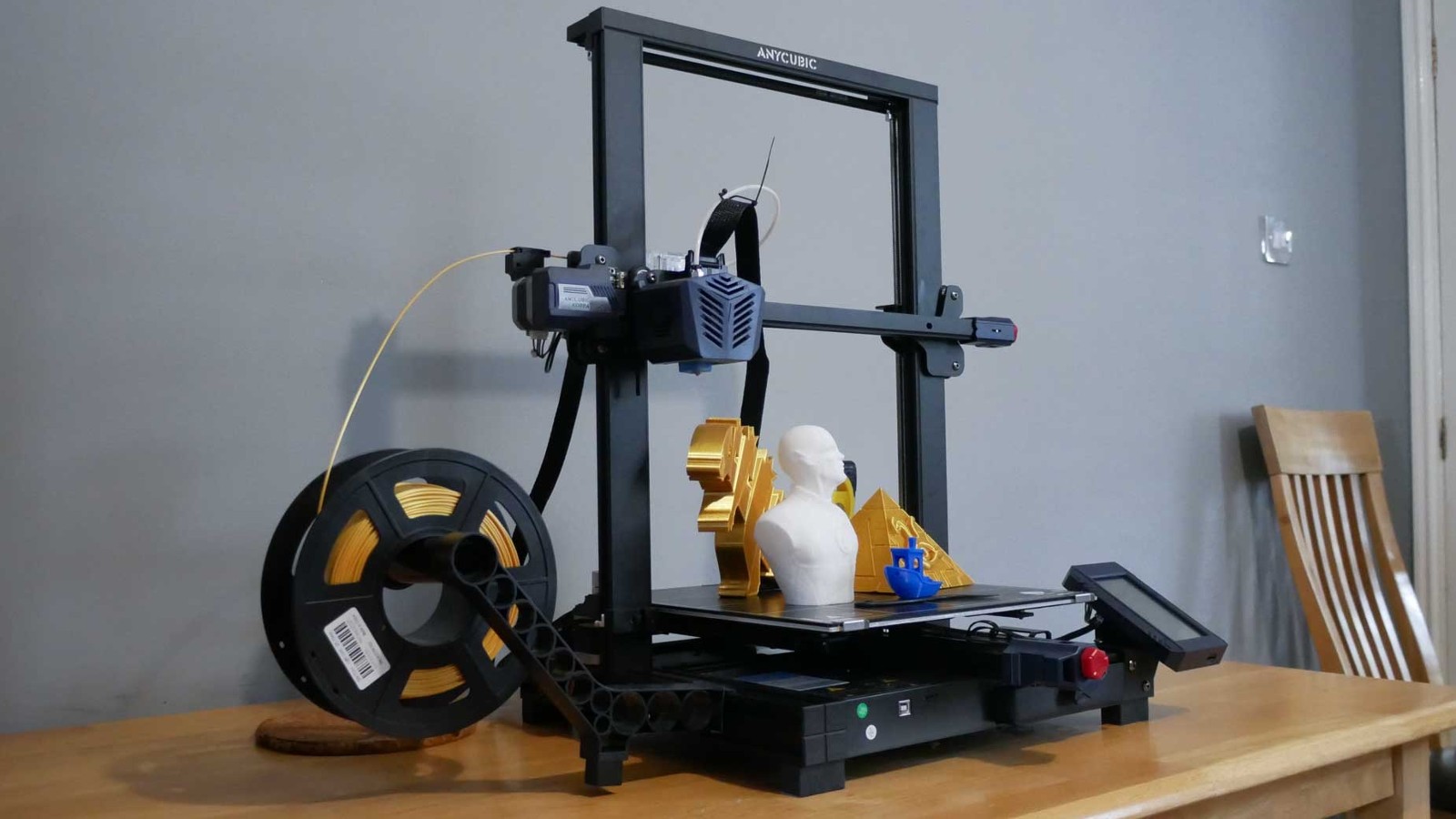
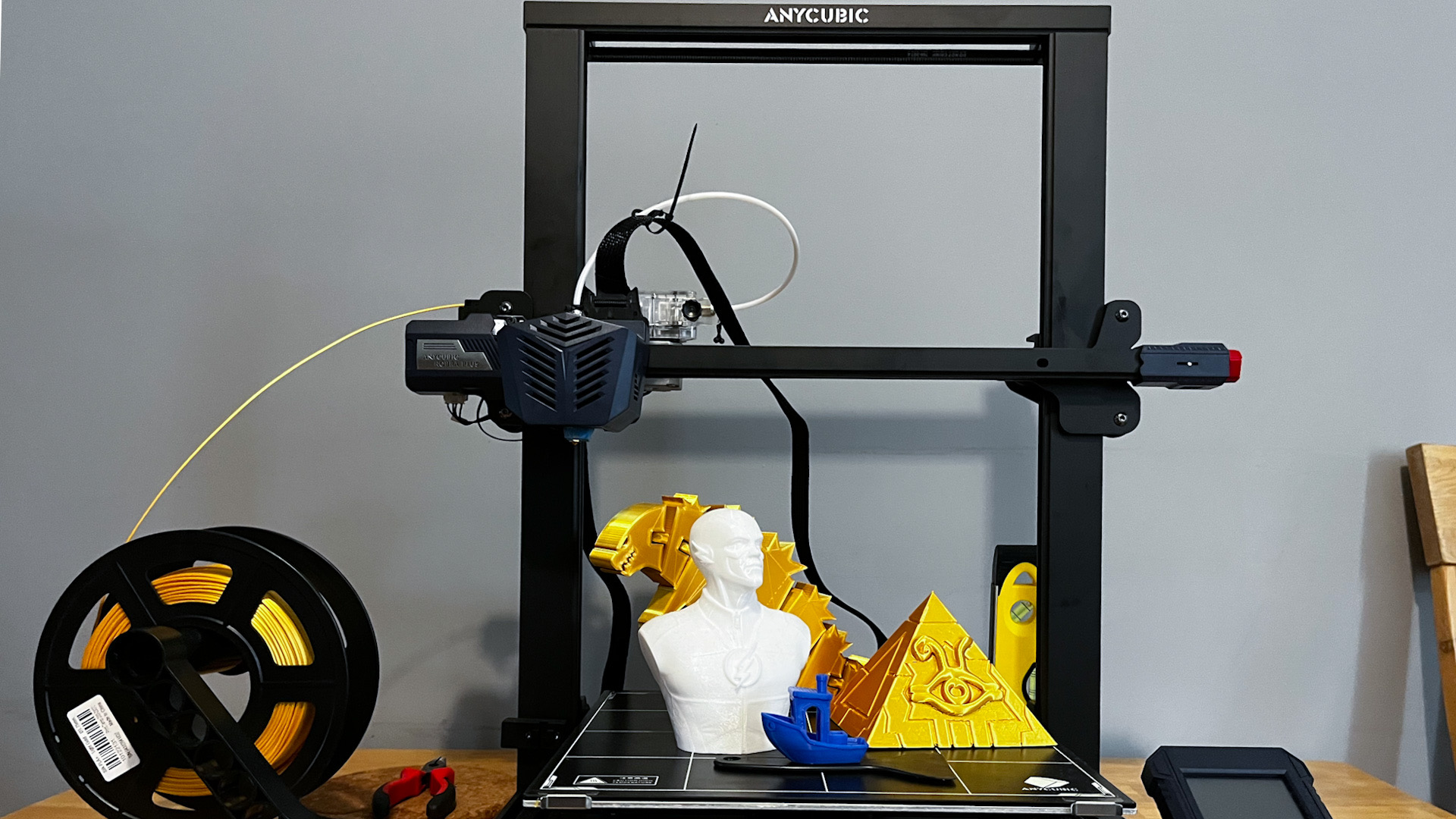
Set up for the Anycubic Kobra Plus is an incredibly simple procedure, one that's thankfully hard to mess up. In the box, users will find two large pieces that simply fit together with eight large screws; the printer’s screen attaches to the base with two smaller screws. You don't even have to worry about providing tools as everything you need is included.
After screwing everything in, only a few cables need to be plugged in: the left and right axis, the screen, hotend, and extruder. Finally, unclip the cable ties with the provided cutters and it’s ready to print. Well, after initiating the auto-levelling set up.
The design for the Anycubic Kobra Plus is far from unique. Similar to the company's past half-decade of commercial printers, the company's latest is the same open-air design it usually releases. In fact, the machine looks eerily similar to another line of Anycubic’s printers.
Anycubic Kobra Plus review: Specs & features
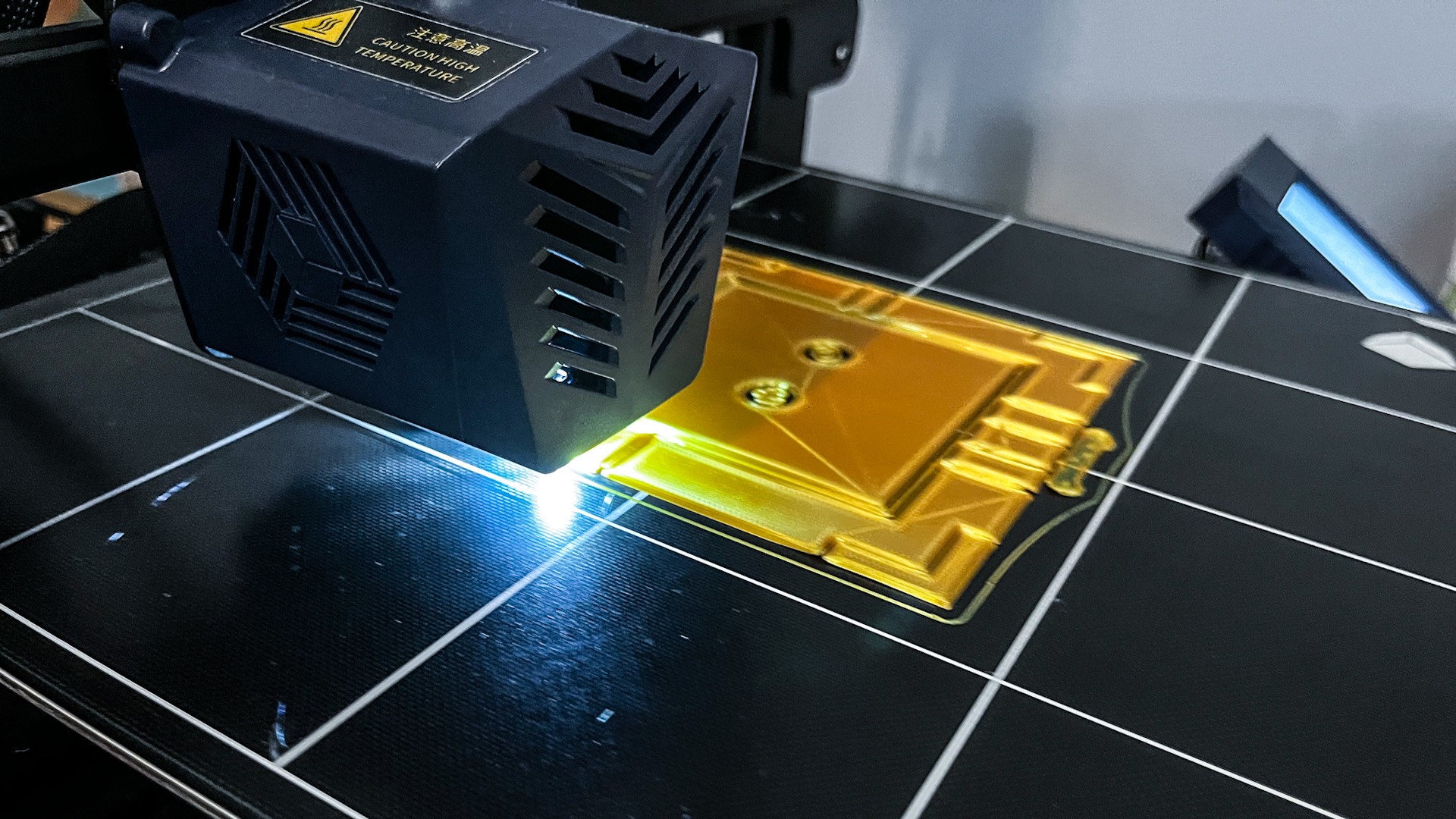
It’s fair to say that there's nothing unique when it comes to Anycubic Kobra Plus features, but what's included makes for a well-rounded machine. Instead of being an upgraded version of the cheaper Anycubic Kobra, the Kobra Plus is a direct follow-up to last year’s Anycubic Vyper. This is obvious from its carbon-copy feature set; just like the Vyper, the Kobra Plus is equipped with auto-levelling, the exact same Bowden extruder, silent stepper motors, and an identical UI.
The Kobra Plus’ single Z-motor makes for a standard, unexciting device for printing veterans. On the other hand, a carborundum glass bed offers brilliant sticking for prints without the need for extra adhesion. However, unlike other companies’ carborundum plates, the Kobra’s has a habit of holding tight to prints, even after hours of cooling.
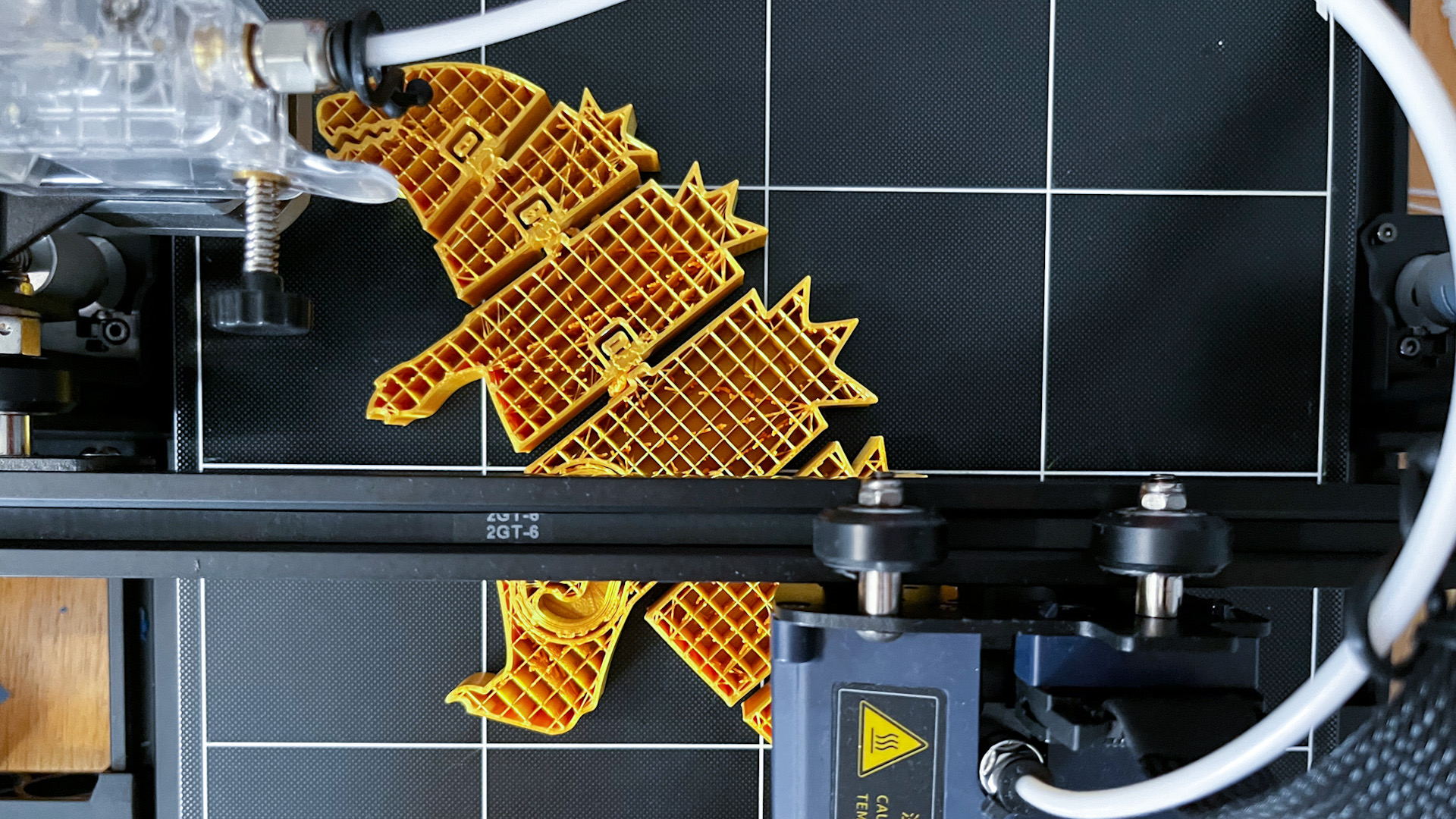
For newcomers and veterans alike, the most exciting feature of the Kobra Plus is its sizable printing area. At 350 x 300 x 300 mm, the 3D printer allows for some huge builds, including full-sized helmets. It may not be as impressive as its more expensive brother, the Anycubic Kobra Max, but it’s an ideal surface area for those working on bigger projects.
In a bid to simplify some of 3D printing’s most infuriating hang-ups, Anycubic has included two welcome features: a filament runout sensor and resume printing. The former pauses a print when no more filament is detected, allowing you to put in more filament and save a project. The latter allows you to resume a print after a power cut.
There's nothing really special included in the Kobra Plus, but that's to be expected. After all, the printer copies the feature set of its bigger brother, but it is a shame to see no contemporary features like multi-colour or multi-material prints.
Anycubic Kobra Plus review: Print quality & speed
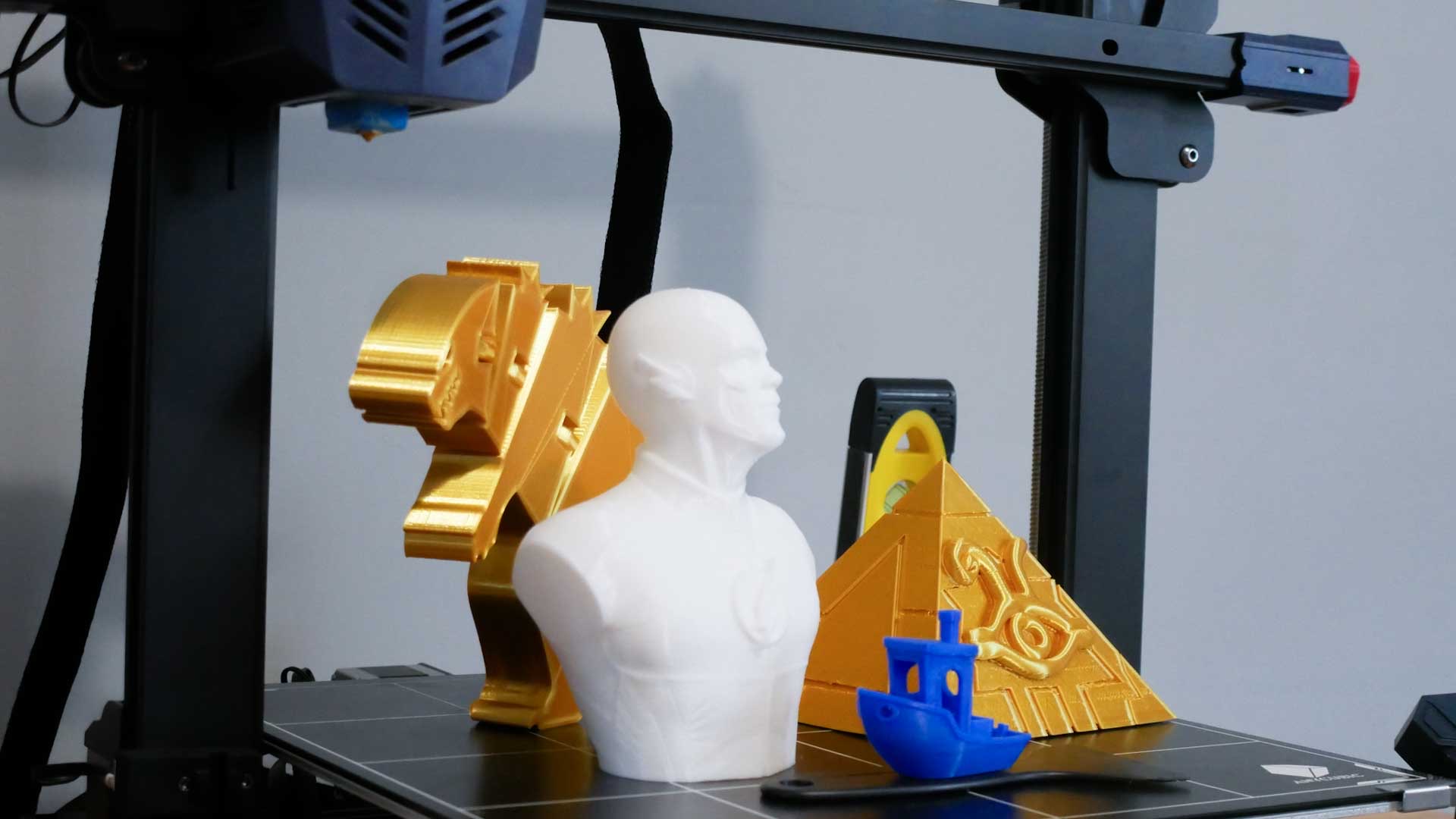
The Anycubic Kobra Plus has great print quality for a filament-based printer. Of course, you’re never going to get the ultra-smooth lineless look of resin printers like the Elegoo Saturn, but in this day and age that’s expected. With that being said, print quality will depend on the quality and age of filament, but using a fresh, decent filament – such as Anycubic’s own-brand filament or even Amazon Basics filament – will usually provide a good experience.
As an added bonus, prints can be done at decent speeds. Rated for a maximum print speed of 180 mm per second, prints can be completed at faster speeds with the caveat that they'll be louder and may come out rougher. It's not the fastest printer on the market, but for those who are able to perfectly dial in their slicer settings, it should provide the speeds you need.
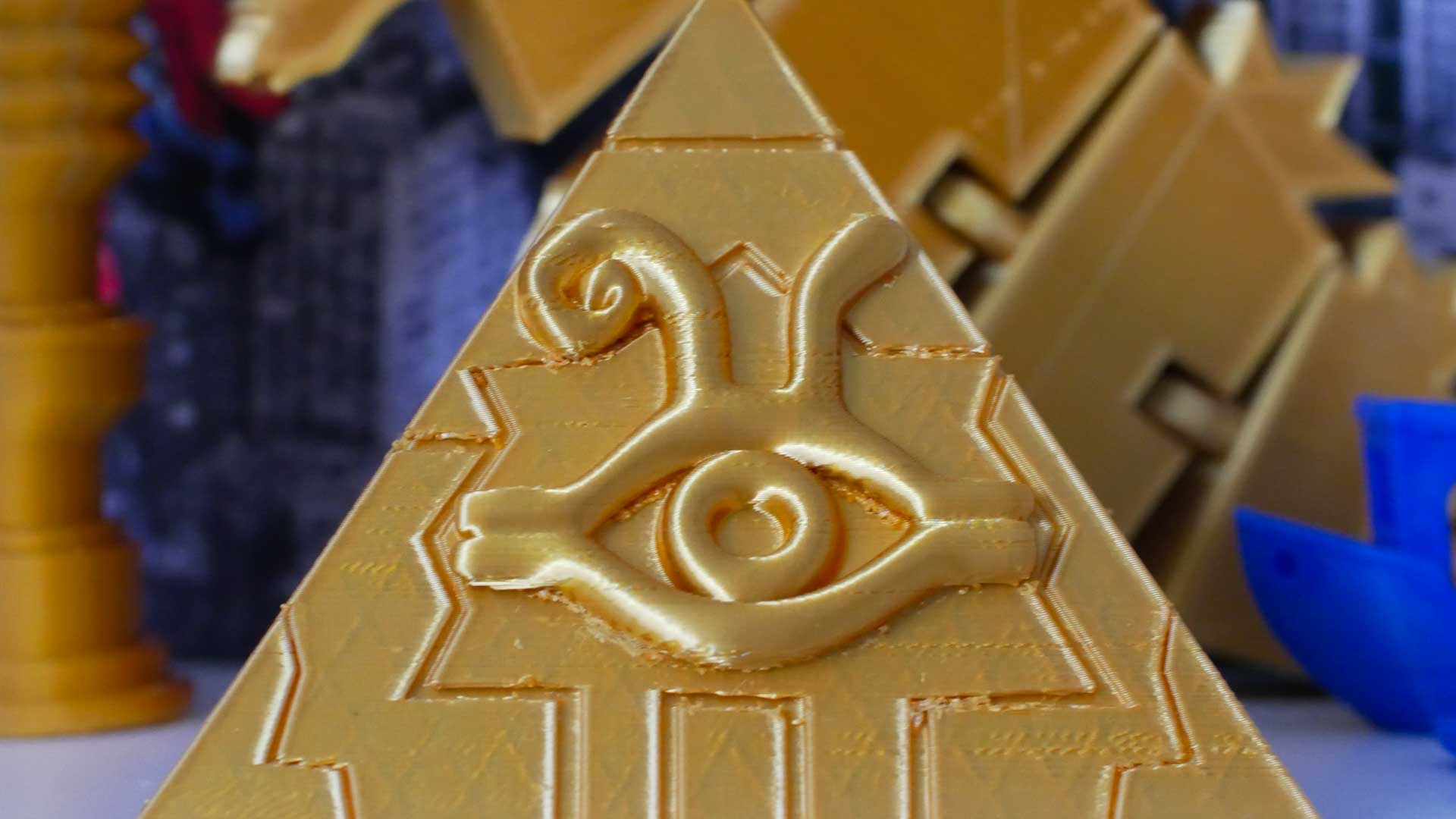
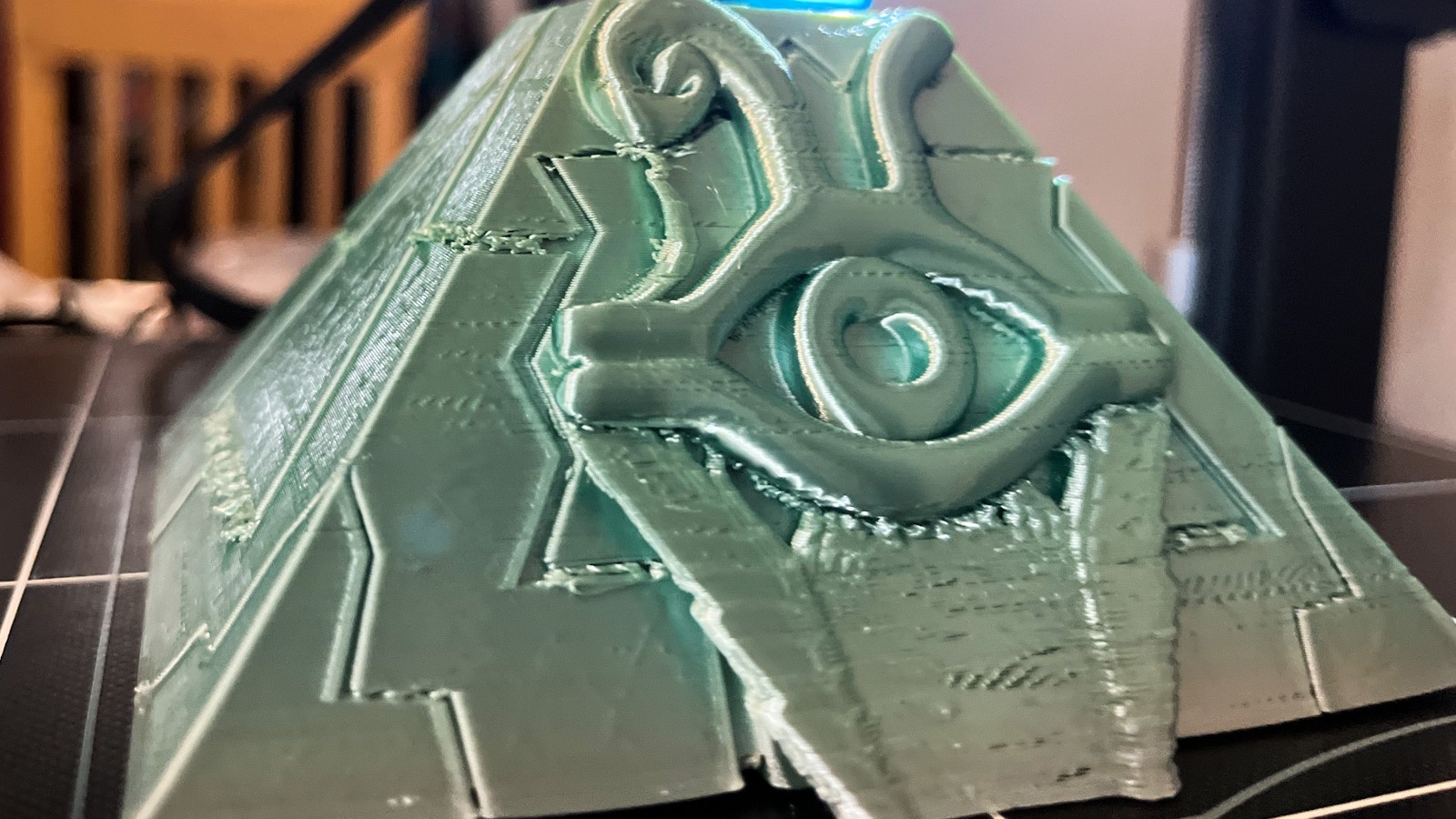
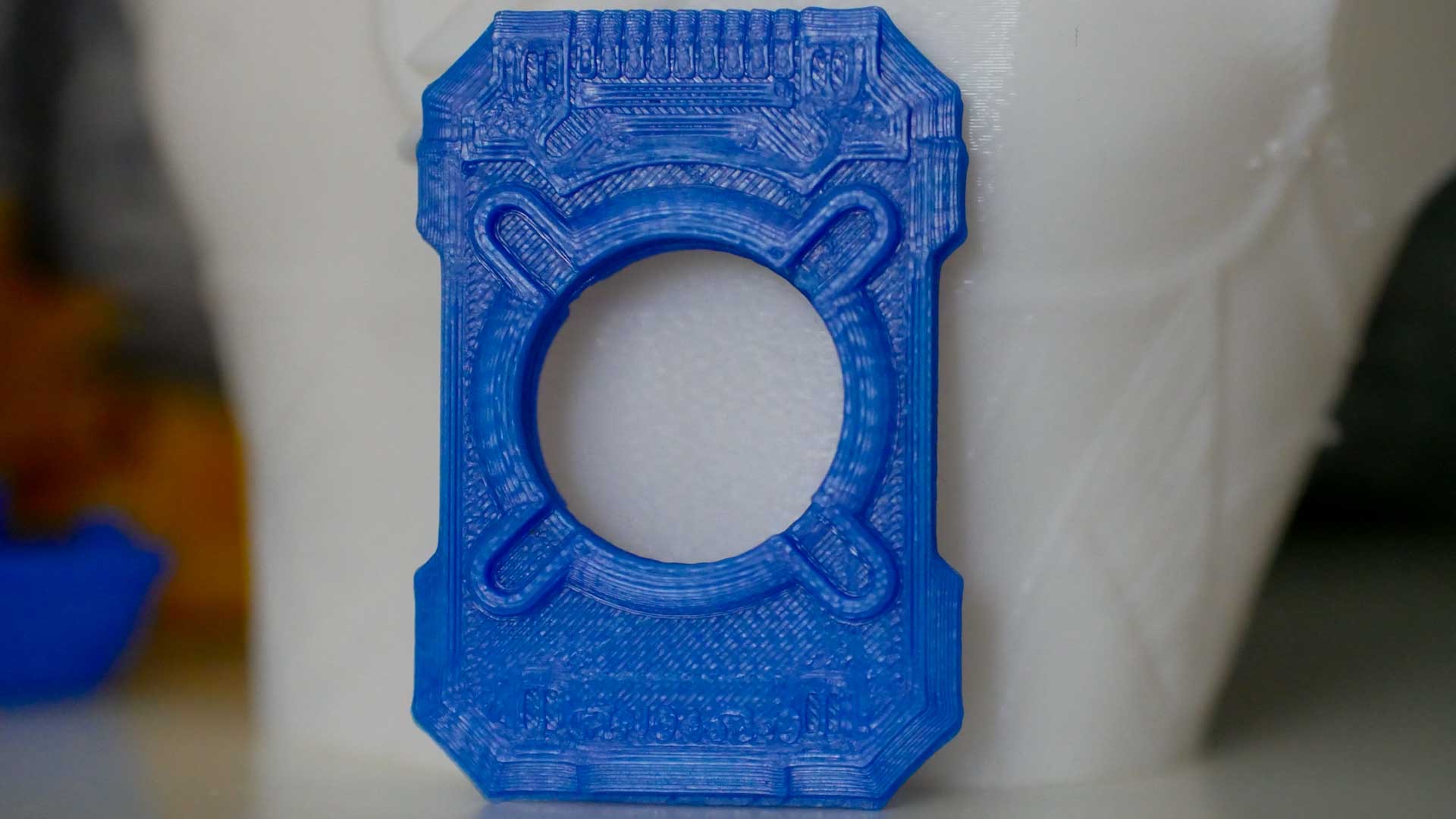
There are a few caveats towards print quality. For starters, all quality prints require a levelled bed of which the Kobra Plus can only do automatically. For some this is a great solution that makes for a great quality print every time. However, in the future when that feature undoubtedly fails, the lack of manual levelling as a backup means the device will be useless. As of now, we haven’t had any problems.
Another issue with the Anycubic Kobra Plus is its lack of minute offset controls. Currently, the 3D printer only allows you to input an offset of .5 mm – of which we’ve always had to use .5 mm after auto-levelling – but a more specific .1 mm would be appreciated. With upgradable firmware, this will hopefully make its way to Kobra printers.
Anycubic Kobra Plus review: Price & warranty
At just $499/£395, the Anycubic Kobra Plus price is nothing to scoff at. Lucky early birds who manage to snag one of the first 2,000 units available from 10am EDT June 15, 2022 will be able to get the Anycubic Kobra Plus for just $399 - subscribe to the Anycubic newsletter to be notified to its launch.
While the device may appeal to an entry-level crowd with its easy-to-use nature, it’s priced appropriately to its mid-range specs. It’s not particularly cheaper or more expensive than similar printers, but it’s just right for what it offers.
Then again, the Kobra Plus does leave some things out that should be commonplace at this point. For example, the printer still has the same plastic extruder as the Anycubic Vyper, one that occasionally caused issues for some reviewers. Having one plastic part in an otherwise metal system just means there is an obvious failure point. While we didn’t experience any issues in our testing, it’s still a worrisome weak point.
As for warranty, Anycubic does offer a standard 12-month warranty with every printer. If there are any major faults that you can’t fix yourself, the company will offer to replace your device. However, in our experience, you are more likely to be sent a spare part to fix it yourself. After all, the entire experience surrounding 3D printers revolves around DIY.
Should you buy the Anycubic Kobra Plus?
Is the Anycubic Kobra Plus a good 3D printer? Absolutely. It’s everything the Vyper should’ve been last year, just a little bit bigger. There are still a few minor issues that pop up here and there, and more improvements to make for next year’s model (whatever that’ll be called).
If you’re looking for an easy-to-use 3D printer that doesn’t skimp out on you, the Kobra Plus is designed entirely for you. It’s a printer that allows you to keep the training gloves on while not holding back on expert results. For newcomers, this is a printer that you can learn with, dealing with only minor frustrations like getting your prints off the bed.
If this 3D printer isn’t right for you?
Of course, if you’re looking for Anycubic Kobra Plus alternatives, there’s a lot out there. For starters, there are other entries in the Kobra lineup, both the base Anycubic Kobra and the bigger, more expensive Anycubic Kobra Max.
There aren’t many differences between the Anycubic Kobra Plus and the Kobra Max. In fact, the Max is simply bigger rather than better. For roughly an extra $70/£55 (total price is $569), you are essentially just getting a larger build volume at 400 x 400 x 450 mm. If you need a bigger printer, this is the one to go for.
On the other hand, the base Kobra is a different printer entirely, nothing like the Kobra Plus or Max. For example, instead of the traditional Bowden extruder, the base machine opts for a simpler direct drive with a top-mounted filament spool. The glass bed is also missing in favor of Anycubic’s typical magnetic sheet. It feels like a wholly different machine aimed purely at the entry-level, budget printer market with a starting price of $299.
Finally, it’s worth mentioning that the Anycubic Kobra Plus might only be the machine for you if you want to get into FDM printing. There are a number of other ways to 3D print objects these days, with the other popular alternative being SLA resin printers. If FDM isn’t your style, an Anycubic Photon M3 or even an Elegoo Saturn may be worth looking into.
Join our Space Forums to keep talking space on the latest missions, night sky and more! And if you have a news tip, correction or comment, let us know at: community@space.com.
A first honours graduate of games journalism and public relations, Lewis has enjoyed a sizeable career as a freelance journalist. Most known for anti-Metaverse and anti-Crypto content on Stealth Optional, Lewis is also an avid tech reviewer for anything from iPads to FDM printers. You can follow them on Twitter if you really want to @lewis_d_white.
